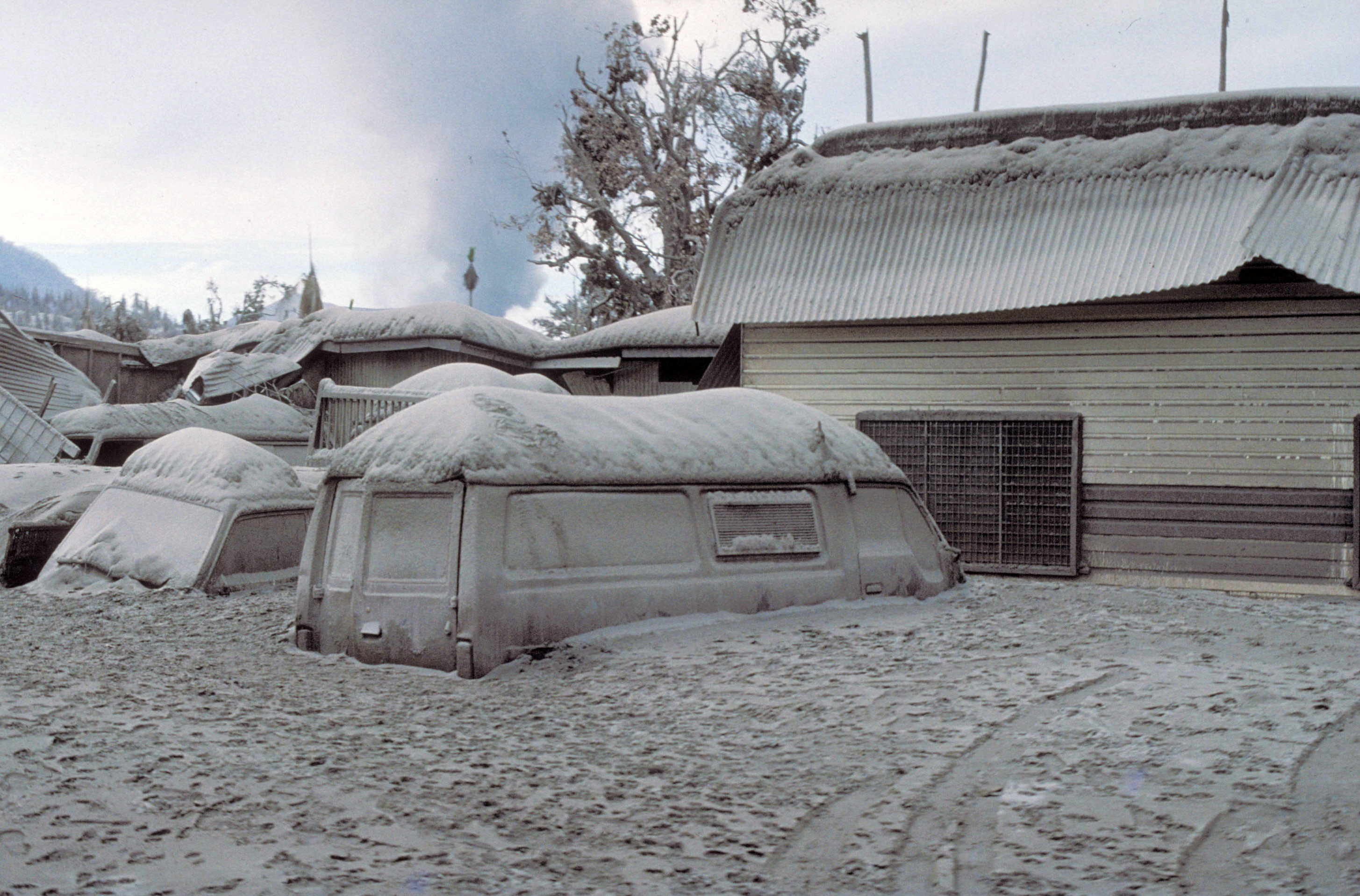Volcanoes are capable of causing enormous damage to buildings, houses and the livelihoods of affected residents. Main hazards of volcanic eruptions include lava flow, lahar, pyroclastic flow, tephra fall and lava bombs, and volcanic gas.
LAVA FLOW

This is the least dangerous of all processes as lava does not move very fast. It should be noted that lava is of a very high temperature (between 500°C and 1400°C) and can therefore cause injuries. Soles of boots can be melted if they come into contact with lava so never assume you are safe with covered shoes! It can take days, or an extended period of time for lava to completely cool.
LAHARS

An Indonesian term, a Lahar is a mixture of hot or cold water and rock fragments. These mixtures tend to flow down slopes of a volcano and usually enters a river valley. A Lahar in motion resembles a rolling slurry of wet concrete. The size, speed, and amount of material carried can vary constantly. A Lahar can grow up to 10 times its initial size and exceed speeds of 200 km/h. This is due to the fact that Lahars grow when they incorporate anything in their paths. This can include rocks, soil, plants, and even buildings and bridges.
Lahars can trap people in dangerous areas, especially in places where more volcanic activity occurs. Lahars may be too deep, too soft or too hot for humans to cross. Over the course of weeks to years from the eruption, Lahars can cause severe floodings due to erosion of loose volcanic deposits in heavy rain.
TEPHRA FALL

Ashfall is the most widespread and frequent volcanic hazard.
Tephra is produced when volcanoes erupt in explosions. It is made of rock fragments from sudden ejection of magma and rock. Fragments can range from below 2mm in diameter to larger than 64 mm in diameter. The smaller the fragment, the further it gets carried away. This is especially true for ash, which generally falls below 2mm in diameter. Ash gets carried by winds and can travel for very long distances. As a result, it can affect commodities and farmland across hundreds, or even thousands of square kilometres.
Ash can also endanger aviation and infrastructure.
Currently Deployed Warning Systems
SATELLITE RADAR

When a volcano is building up to an eruption, magma will move. This causes temperatures of rocks around the magma to be elevated, resulting in expansion. Expansion results in ground deformation, which can be detected by satellite radars. Current eruption warning systems rely on this method to detect early signs of an upcoming eruption so more probes can be deployed to the affected area.
PILOT REPORTS

Aircrafts flying through an ash cloud may experience a phenomenon known as the St. Elmo’s Fire. This phenomenon occurs when luminous plasma is created by a corona discharge from a sharp or pointed object in a strong electric field in the atmosphere. This may be due to thunderstorms or volcanic eruptions.
The electric field around the aircraft engine causes ionisation of the air molecules. In low-light conditions, a faint glow is easily observed. The nitrogen and oxygen in the Earth’s atmosphere cause St. Elmo’s Fire to fluoresce with blue or violet light.
The main limitation of this method is that this phenomenon only occurs after an eruption has occurred and due to its low visibility, observations can only be made at night.
ATMOSPHERIC DISPERSION MODELLING

Atmospheric dispersion modelling is the mathematical simulation of how air pollutants disperse in the ambient atmosphere. These are used during eruptions to predict how volcanic ash and toxic gases will spread based on available data on the surrounding weather. After predictions are made, residents in potentially affected areas will be informed to evacuate.
However, due to the computational nature of such models, it may require an extended period of time before a prediction of a reasonable accuracy is made. As such, it may be too late for residents to evacuate out of their homes if they may be affected.
Also, the chaotic nature of weather patterns might result in false alarms and inaccurate predictions. This might cause widespread panic and confusion on the ground level.
It is therefore an urgent problem that we have to solve. See Working Principle for more information.